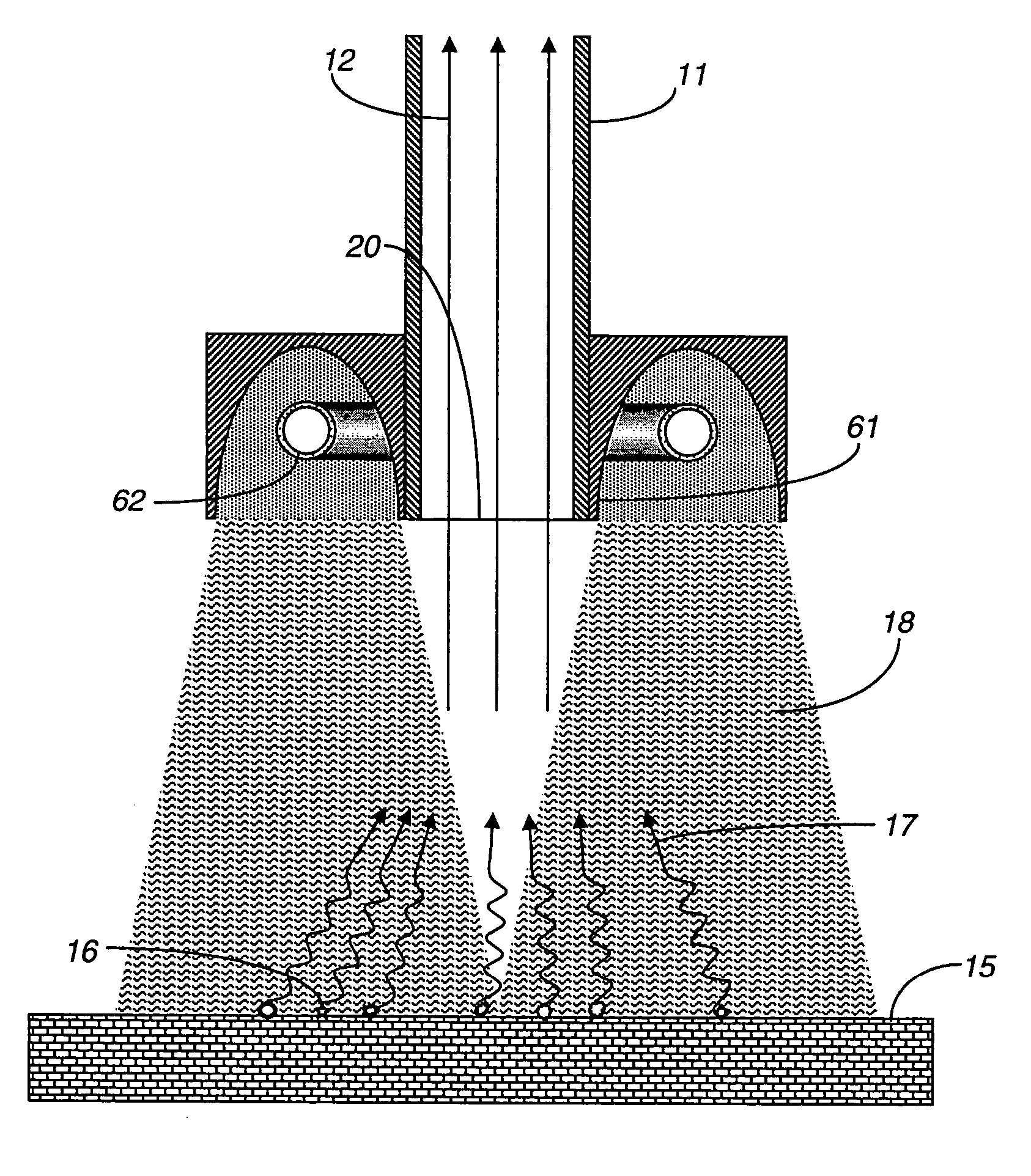Flash vapor sampling for a trace chemical detector
- Summary
- Abstract
- Description
- Claims
- Application Information
AI Technical Summary
Benefits of technology
Problems solved by technology
Method used
Image
Examples
Embodiment Construction
[0026] An IMS is illustrated in FIG. 1. While various embodiments may differ in details, FIG. 1 shows basic features of an IMS that may be used in connection with the system described herein. The IMS includes an ion source 1, a drift tube 2, a current collector 3, a source of operating voltage 4 and a source of purified drift gas 5, possibly with its own gas pump 6. An IMS may already include a gas pump for gas sampling 10 and a tubular connection 11 between the ion source 1 and an external gas sampling inlet 20 that includes an orifice. Gas flow for the drift gas 7 moves through the drift tube 2. Sampling gas flow 12 moves from the external gas sampling inlet 20 through the tubular connection 11 and ion source 1 to the gas sampling pump 10.
[0027]FIG. 2 shows an exemplary embodiment for a system using an electrical discharge in a gas within a pulsed light lamp 62 provided proximal to the gas sampling inlet 20 that heats the target surface 15 in conjunction with the gas sampling sys...
PUM
 Login to View More
Login to View More Abstract
Description
Claims
Application Information
 Login to View More
Login to View More - R&D
- Intellectual Property
- Life Sciences
- Materials
- Tech Scout
- Unparalleled Data Quality
- Higher Quality Content
- 60% Fewer Hallucinations
Browse by: Latest US Patents, China's latest patents, Technical Efficacy Thesaurus, Application Domain, Technology Topic, Popular Technical Reports.
© 2025 PatSnap. All rights reserved.Legal|Privacy policy|Modern Slavery Act Transparency Statement|Sitemap|About US| Contact US: help@patsnap.com



